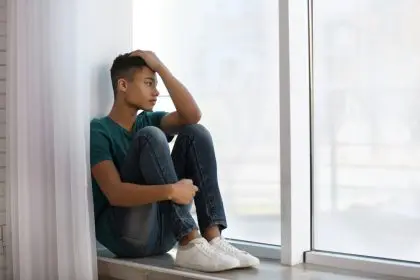Dementia, affecting millions worldwide, isn’t a single condition but rather an umbrella term encompassing various disorders that impair cognitive function, memory, and everyday capabilities. Each type presents unique challenges and requires specific approaches to care. Understanding these differences proves crucial for early diagnosis, proper care, and improved quality of life for those affected and their loved ones.
1. Alzheimer’s disease
As the most prevalent form of dementia, Alzheimer’s accounts for 60-80% of all cases. While primarily affecting older adults, it can emerge as early as one’s 40s or 50s in the form of early-onset Alzheimer’s.
Key symptoms include gradual memory loss, particularly affecting short-term recall, difficulty completing familiar tasks, confusion about time or place, changes in mood or personality, and trouble with problem-solving or planning.
The hallmark of Alzheimer’s involves beta-amyloid plaques and tau tangles accumulating in the brain, disrupting cell communication and leading to brain cell death. Genetic factors, such as mutations in the APOE gene, and lifestyle factors like poor cardiovascular health may contribute to its development. While no cure exists, treatments like cholinesterase inhibitors and lifestyle modifications, including regular exercise and mental stimulation, can help slow symptom progression.
2. Vascular dementia
Following Alzheimer’s in frequency, vascular dementia stems from reduced blood flow damaging brain tissue. Often linked to stroke or cardiovascular problems, it presents with sudden or gradual cognitive decline, difficulty focusing or paying attention, problems with decision-making, and memory issues that vary in severity. Physical symptoms may include difficulty walking or balance problems.
This type develops from conditions affecting blood flow to the brain, including strokes, high blood pressure, and diabetes. Small, cumulative strokes over time can contribute to its progression. Treatment focuses on managing underlying conditions through blood pressure control, improving cholesterol levels, and adopting a heart-healthy lifestyle. Early intervention proves key to preventing further decline.
3. Lewy body dementia
This distinctive form features abnormal protein deposits called Lewy bodies in the brain. It shares characteristics with Parkinson’s disease and presents unique symptoms including visual hallucinations, fluctuations in alertness and attention, Parkinsonian symptoms like tremors or stiffness, sleep disturbances including acting out dreams, and difficulty with problem-solving and spatial reasoning.
While the exact cause remains unclear, management combines medications like cholinesterase inhibitors for cognitive symptoms with physical therapy and lifestyle adjustments for movement-related issues. Strong caregiver support proves essential for managing the complex needs of individuals with LBD.
4. Frontotemporal dementia
Primarily affecting the brain’s frontal and temporal lobes, this type notably impacts personality, behavior, and language. It tends to develop earlier than other forms and presents with noticeable personality or behavioral changes, difficulty with speech or understanding language, loss of empathy, inappropriate social behavior, and impulsive or compulsive actions. Unlike other types, memory often remains less affected in early stages.
FTD links to abnormal accumulation of proteins like tau or TDP-43 in the brain, with genetic mutations playing a significant role in hereditary cases. While no cure exists, speech therapy, behavioral strategies, and symptom-management medications can improve quality of life. Support groups provide valuable resources for families and caregivers.
5. Mixed dementia
Representing a combination of multiple dementia types, mixed dementia most commonly pairs Alzheimer’s with vascular dementia. This complexity presents a blend of symptoms from contributing types, variable progression of cognitive decline, and particular challenges in diagnosis due to overlapping features.
The causes depend on the underlying types present, requiring treatment focused on addressing contributing conditions and providing comprehensive care for a broad spectrum of symptoms. Early diagnosis particularly benefits the development of tailored treatment plans.
The importance of recognition
Understanding these different types of dementia matters for several crucial reasons. Early intervention helps individuals seek medical attention sooner, while knowledge of specific types enables tailored treatment approaches. This understanding also empowers families to provide appropriate support and seek necessary resources.
Essential care considerations
Caring for someone with dementia requires educating yourself about the specific type, establishing routines for stability, seeking professional help when needed, and joining support groups to share experiences and advice. This comprehensive approach helps both patients and caregivers navigate the challenges while maintaining hope and quality of life.
Knowledge of these five key types—Alzheimer’s disease, vascular dementia, Lewy body dementia, frontotemporal dementia, and mixed dementia—leads to better outcomes for those affected. Through informed decision-making and proactive care approaches, families can provide more effective and compassionate support for their loved ones facing these challenging conditions.
This story was created using AI technology.












